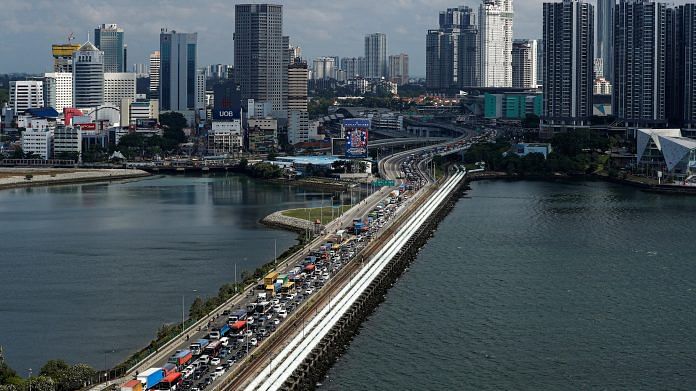The coronavirus recovery is in trouble before it even begins. As swiftly as the lockdowns across Asia were imposed, the process of lifting them will be slow and uneven. That means the region is months, if not years, away from any semblance of normal.
Plans for full and partial reopenings in Australia, Singapore and Thailand sound reasonable in theory, but they won’t deliver the hoped-for economic bounce. These countries, deeply reliant on trade and tourism, remain largely closed to the outside world. Domestic consumers, buffeted by layoffs and wage cuts, are in poor shape to pick up the slack. Bankruptcies in Singapore were climbing even before the most stringent virus-suppression efforts.
In Australia, social engagements can resume and businesses can open their doors. Yet the country is bereft of foreign tourists, new international students and immigrants — and it was workers from abroad who helped drive the 28-year boom that preceded the pandemic. The lockdown has essentially set Australia back four decades, just before Paul Hogan starred in the Crocodile Dundee movies, as Bloomberg News’s Michael Heath wrote. That era saw a boost in tourism and freer capital markets, with moves to float the local dollar and lower tariffs.
Politicians say raising the drawbridge isn’t a big deal; domestic spending can make up the difference. Aussies will vacation closer to home. You can simply luxuriate in tropical Queensland resorts instead of the Maldives. But this is a big country with relatively expensive domestic air travel (one of two major carriers just collapsed amid the shutdown). With the jobless rate likely to climb to 10% soon, according to the central bank, any splurge seems frivolous. You can’t just plug a labor market back in after cutting the cord.
In Singapore, core economic sectors — tourism, lodging and conventions — will be among the last to restart. The government unveiled Tuesday a phased reopening after two months of lockdown. From June 2, schools will gradually welcome back students, limited family visits can occur and many businesses that don’t interact with the public can resume. Large corporate gatherings, as well as sporting and cultural events, are on hold. Some activities will be shelved until a vaccine is found, or Covid-19 is no longer deemed a risk.
Officials in the city-state say they are prioritizing safety and want to avoid a second wave that will further retard the recovery. While the concern is entirely justified, it comes at a cost: Singapore attracted 19.1 million visitors last year, more than three times its population. Tourism makes up about 4% of GDP, and supports a substantial hotel industry and retail scene. Yet Singapore Airlines Ltd.’s fleet remains mothballed. All this adds up to a grim economic outlook: Gross domestic product will shrink 8.5% this year, Citigroup Inc. predicted.
The state of the travel industry makes optimism about Thailand’s prospects all the more puzzling. Wagers on an appreciation of its currency, the baht, appear anchored in the idea of tourists returning. With most borders shut and big economies plagued by historic levels of unemployment, where are these visitors going to come from?
While caution is understandable, these awakenings don’t inspire confidence in a long and robust recovery. Global GDP will jump an annualized 37% in July to September after diving in the current quarter, says JPMorgan Chase & Co. Economies are nevertheless unlikely to regain their pre-Covid form anytime soon, and even less likely to do so uniformly. “Along with variation in the peak of containment polices, there has been equally large variation in the degree to which countries are now reversing these measures,” Joseph Lupton, the bank’s global economist in New York, wrote this week.
In an effort to crank up the flow of people, countries are exploring green lanes that would prioritize visitors from nations seen to have had success tamping down the virus. That sets a low bar, and would be a step toward restoring tourism and business travel. But it’s a far cry from status-quo ante. Much of Asia rose from agricultural backwaters to urbanized hubs for manufacturing and services because they embraced globalization. An Asia disconnected from the world would be a major step back. – Bloomberg
Also read: How coronavirus has shattered the world order, sowed anger and mistrust



